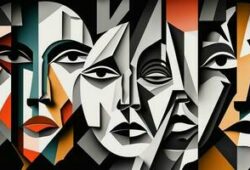Sohrai Folk Art: Celebrating Nature’s Essence Through Vibrant Creations
 Posted On
Posted On
Sohrai, an ancient tribal art form, originates from the tribal communities of Jharkhand, India. It is a unique expression of their cultural heritage, deeply rooted in their connection with nature and their surroundings. Derived from the words ‘sohra’ meaning harvest and ‘ai’ meaning cow dung, Sohrai primarily involves paintings made with natural pigments extracted from elements like cow dung, soil, and plants. This art form is not just a form of expression but also a way of life for the indigenous communities.
The art of Sohrai is intricately linked to the agricultural cycle, reflecting the communities’ gratitude towards nature for a bountiful harvest. It is traditionally practiced during the Sohrai festival, celebrated after the Kharif crop harvest, where people come together to adorn their homes with these vibrant paintings. The walls and floors of houses are adorned with colourful depictions of flora, fauna, and mythological narratives, transforming the mundane into a canvas of vibrant storytelling.
The motifs used in Sohrai paintings are symbolic representations of the community’s reverence for nature. Trees, animals, birds, and celestial bodies are commonly featured, each carrying profound cultural significance. The Tree of Life is a recurring motif, symbolizing fertility, prosperity, and the interconnectedness of all living beings. Peacocks, elephants, and snakes are often depicted, signifying beauty, strength, and wisdom respectively.
The process of creating Sohrai art is as organic as its themes. The artists begin by smearing the walls with a mixture of cow dung and mud, providing a base for the paintings. Brushes made from bamboo sticks or twigs are used to apply natural pigments extracted from leaves, flowers, and charcoal. The artists’ skilled hands bring these elements together, blending colours harmoniously to create intricate patterns and designs.
Sohrai art not only serves as a visual delight but also plays a significant role in preserving the cultural identity of these tribal communities. Through generations, the art form has been passed down orally and visually, ensuring its continuity and evolution. However, with modernization and changing times, there are concerns about its sustainability. The younger generation’s inclination towards contemporary lifestyles poses a challenge to the preservation of this traditional art form.
Efforts are being made by various organizations and individuals to promote and sustain Sohrai art. Workshops, exhibitions, and cultural exchanges are being organized to create awareness and provide a platform for the artists to showcase their talent. Additionally, initiatives aimed at empowering the artisans economically by facilitating access to markets for their artwork are underway.
Sohrai folk art is not just about paintings on walls; it encapsulates a way of life, a spiritual connection to nature, and a celebration of community and tradition. It serves as a reminder of the importance of preserving indigenous art forms, not just for their aesthetic value but for their role in maintaining cultural diversity and heritage. As efforts continue to preserve and promote this beautiful art form, Sohrai stands as a testament to the enduring bond between humanity and nature.



